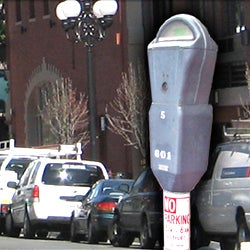Noise Management
Frequently Asked Questions
Who do I contact to complain about airplane noise at Montgomery-Gibbs Executive Airport or Brown Field?
Call the Airport Noise Abatement Officer at 858-573-1436, email Airports@sandiego.gov or use our online reporting form. Please include the date, time, and location of the incident, as well as, your contact information.
What happens when a complaint is made?
The complaint is investigated to determine if a violation of airport noise regulations occurred. If a violation did occur, a Notice of Violation will be issued to the aircraft operator. Aircraft operators are informed that noise limits are monitored and strictly enforced, and of the potential fine amounts. Complaints are kept on file and their locations plotted for trend analysis.
What noise limits are in effect at Montgomery-Gibbs Executive Airport?
The City ordinance-imposed daytime noise limit of 88 decibels is in effect from 6:30 a.m. to 11:30 p.m. The nighttime noise limit of 70 decibels is in effect from 11:30 p.m. to 6:30 a.m. These limits apply in residential areas near the airport. Law enforcement, emergency, fire or rescue aircraft, and medical flights are exempt from the noise limits, as well as, aircraft operated by the federal, state and local government.
Is there a curfew at Montgomery-Gibbs Executive Airport?
No. Montgomery-Gibbs Executive Airport is a public-use airport, and is required to be open at all times.
What other noise regulations exist at Montgomery-Gibbs Executive Airport?
City Ordinance prohibits touch and go operations, stop and go operations, and practice low approaches at Montgomery-Gibbs Executive Airport between 11:30 p.m. and 6:30 a.m.
How are noise regulations enforced at Montgomery-Gibbs Executive Airport?
The city operates a noise monitoring system to record noise levels in communities near the airport. Exceeding the noise limit is a violation of City ordinance, and may result in fines up to $250. When a violation occurs, a Notice of Violation is sent to the aircraft operator. Aircraft operators are informed that noise limits are monitored and strictly enforced, and of the potential fine amounts. Repeat or significant violations will result in an Administrative Citation, which is a fine.
Why is there airplane traffic during the middle of the night...aren't they in violation?
Not necessarily, but occasional violations of the noise limits do occur. The noise limit is more restrictive between 11:30 p.m. and 6:30 a.m. Law enforcement, emergency, fire or rescue aircraft, and medical flights are exempt from the noise limits, as well as, aircraft operated by the federal, state and local government.
Why do airplanes take off and land over residential areas?
Airplanes normally take off and land into the prevailing wind, which is usually from the west. The main runways at Montgomery-Gibbs Executive Airport and Brown Field are aligned on an east-west heading for this purpose. Montgomery-Gibbs Executive Airport also has a cross-wind runway, which is used when the winds blow from the southwest or northeast. Other factors that influence where airplanes fly include: weather, air traffic, airspace and terrain. The airport does not have the authority to force pilots to use a specific runway or take off in a specific direction.
How do aircraft take off and land at night when the control tower is closed?
Pilots transmit their position and intentions on a common traffic advisory frequency (CTAF).
Is there a minimum legal altitude aircraft can fly over residential areas?
Title 14 of the Code of Federal Regulations (CFR) Part 91 specify a minimum altitude of 1,000 feet over congested areas, except when necessary for takeoff or landing. Helicopters may be operated at less than the minimum altitude, as long as the operation is conducted without hazard to persons or property on the surface.
Can the city require aircraft to fly at higher altitudes?
The Federal Aviation Administration (FAA) has the sole authority to control air traffic. Neither the City of San Diego nor the state of California can regulate the altitude, speed, direction, or location of aircraft in flight. If you have any questions about aircraft in flight, or wish to report unsafe flying, contact the local Flight Standards District Office (FSDO) at 858-502-9882.
Can the airport put mandatory noise restrictions or procedures in place?
The Airport Noise and Capacity Act of 1990 (ANCA) makes any airport use restriction subject to approval from the FAA. The FAA may approve a restriction if six statutory conditions are supported by substantial evidence. Those conditions are: (1) the restriction is reasonable, nonarbitrary, and nondiscriminatory; (2) the restriction does not create an undue burden on interstate or foreign commerce; (3) the restriction is not inconsistent with maintaining the safe and efficient use of navigable airspace; (4) the restriction does not conflict with a law or regulation of the United States; (5) an adequate opportunity has been provided for public comment on the restriction; and (6) the restriction does not create an undue burden on the national aviation system.
San Diego International has a curfew. How are they allowed to have a curfew?
San Diego International Airport had a departure curfew in place prior to ANCA. Restrictions in effect on Oct. 1, 1990, are not subject to the requirements of ANCA.
Can the City establish noise limits at Brown Field?
The noise limits at Montgomery-Gibbs Executive Airport were established by City ordinance prior to ANCA, and are grandfathered. Any new restriction, such as a curfew or noise limit, would be subject to the requirements of ANCA. Additionally, a modification of an existing restriction would subject that restriction to ANCA, and would most likely result in the elimination of said restriction.
How can aircraft fly quieter over neighborhoods?
San Diego-based King Schools has graciously made available two excellent videos explaining the noise rules for aircraft operating at Montgomery-Gibbs Executive Airport, and techniques pilots can use to reduce their noise impact to surrounding communities. While the information is focused on Montgomery-Gibbs Executive Airport, the techniques can be used at any airport for noise abatement. Some of the chart information in the videos is dated, so pilots should review current aeronautical charts and comply with air traffic control instructions. The link to the videos can be found here: Making Friends for Montgomery Field























